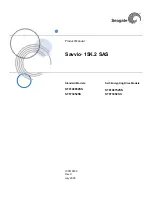
The birth of electronic mail (email) occurred in the early 1960s. The mailbox was a file in a
user's home directory that was readable only by that user. Primitive mail applications appended
new text messages to the bottom of the file, making the user wade through the constantly
growing file to find any particular message. This system was only capable of sending messages
to users on the same system.
The first network transfer of an electronic mail message file took place in 1971 when a computer
engineer named Ray Tomlinson sent a test message between two machines via ARPANET —
the precursor to the Internet. Communication via email soon became very popular, comprising
75 percent of ARPANET's traffic in less than two years.
Today, email systems based on standardized network protocols have evolved into some of the
most widely used services on the Internet. Red Hat Enterprise Linux offers many advanced
applications to serve and access email.
This chapter reviews modern email protocols in use today and some of the programs designed
to send and receive email.
1. Email Protocols
Today, email is delivered using a client/server architecture. An email message is created using
a mail client program. This program then sends the message to a server. The server then
forwards the message to the recipient's email server, where the message is then supplied to the
recipient's email client.
To enable this process, a variety of standard network protocols allow different machines, often
running different operating systems and using different email programs, to send and receive
email.
The following protocols discussed are the most commonly used in the transfer of email.
1.1. Mail Transport Protocols
Mail delivery from a client application to the server, and from an originating server to the
destination server, is handled by the Simple Mail Transfer Protocol (SMTP).
1.1.1. SMTP
The primary purpose of SMTP is to transfer email between mail servers. However, it is critical
for email clients as well. To send email, the client sends the message to an outgoing mail
server, which in turn contacts the destination mail server for delivery. For this reason, it is
necessary to specify an SMTP server when configuring an email client.
Under Red Hat Enterprise Linux, a user can configure an SMTP server on the local machine to
handle mail delivery. However, it is also possible to configure remote SMTP servers for outgoing
mail.
Chapter 11.
185
Summary of Contents for ENTERPRISE LINUX 4.5.0 -
Page 1: ...Red Hat Enterprise Linux 4 5 0 4 5 0 Reference Guide ISBN N A Publication date ...
Page 2: ...Red Hat Enterprise Linux 4 5 0 ...
Page 4: ...Red Hat Enterprise Linux 4 5 0 ...
Page 24: ...xxiv ...
Page 26: ......
Page 36: ...12 ...
Page 72: ...48 ...
Page 112: ...88 ...
Page 122: ...98 ...
Page 140: ...116 ...
Page 142: ......
Page 300: ...276 ...
Page 318: ...294 ...
Page 320: ......
Page 332: ...308 ...
Page 350: ...326 ...
Page 378: ...354 ...
Page 388: ...364 ...
Page 394: ...370 ...
Page 395: ...Part IV Appendixes ...
Page 396: ......
















































